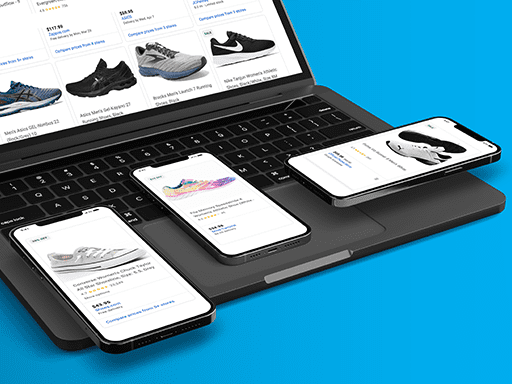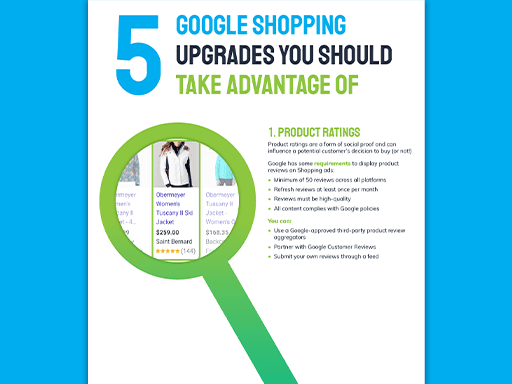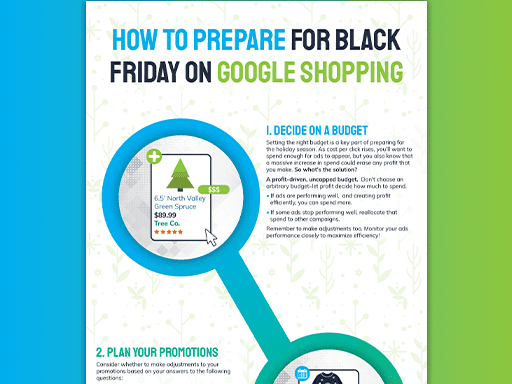Everybody loves a good discount. That’s why retailers have been offering them for millennia to drive sales and increase revenue. Google Shopping is no exception. Promotion extensions on Google Shopping increases click-through rate, improves conversion rate, and drives additional sales.
There’s an option to fit every retailer, from free items to coupons to discounted shipping. Let’s explore Google Shopping promotions!

Which Products and Orders are Discounted?
What kind of promotion are you running? A site-wide discount on all items? Or maybe you have a deal where customers get a discount if they spend more than a certain amount? Depending on the type of promotion, you will need to update either Google Merchant Center or your product feed. You can either apply the promotion to all products, some products, or some orders. Let’s take a look at the difference between each type.

All Products and Orders
If you apply promotions to all products and orders, then no changes are needed in the feed or in Merchant Center. Example: you are having a site wide sale where everything is 20%, you don’t need to change the feed or adjust Merchant Center.

Some Products
If you only apply promotions to some products, you will need to apply the promotion id to those products in the feed. Example: for Father’s Day you discount all ties on your site. You will need to go into the feed and apply the promotion ID to all ties.

Some Orders
If your promotion applies only to some orders, you can apply minimum and maximum order values in the feed. Example: your website has a discount on orders over 50 dollars. You must apply a $50 minimum in your feed.

Promotion: Free Items
Advertisers can offer customers free items or gift cards as an incentive for customers. These promotions can apply to all sales, or just those over a certain total. Depending upon the gift, these promotions can be used to drive additional revenue – if the cost of the gift to the advertiser is less than the additional revenue and profit the purchase drives.

Gift with Purchase
You can offer a gift or a free item with a purchase. This can be virtually anything – as long as it’s a full-size product or full-service offering. Sample sizes and free trials are not allowed. The free item also needs to have an ID in the feed, so Google knows what to list as the free gift. This promotion is good for encouraging the purchase of a new product. Merchants who want to promote future bundle purchases for particular products might also use this promotion.

Free Gift Card
Gift cards are also allowed – but they have to be from the retailer offering the promotion. The promotion also has to clearly state the value of the gift card, so there are no surprises.
Gift cards are a win/win for promotions. Either the card leads to another sale, which in many cases will be above the value of the card, or the recipient may choose not to use the card at all or to use only part of it, in which case you retain the remaining value.
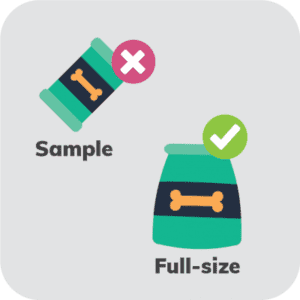
Example Scenario
Pet Food, LLC wants to offer a free item to pet owners who purchase a 25lb or larger bag of SmartPet dog food. The Promotion ID is SmartPet_Free_Gift.
They first create a promotion that applies to the correct SmartPet items, by setting the promotion ID for those products in the feed. However, the free gift is a sample size of new dog treats. Because the gift item is just a sample, Google disapproves the promotion.
Once the retailer changes the free gift to a full-size bag of treats and relaunches the promotion, Google approves it.

Google Shopping Promotion: Discounts
Discounts are a great way to increase average order value and drive additional revenue. Applying these promotions to items with a lower cost of goods can even drive revenue high enough to increase profit.

Dollar or Percentage
You can offer a certain dollar discount, or a percentage off. These discounts have to be at least $5, or 5% off. These discounts can have an upper limit – for example, 10% off up to $50. Ranges are also permitted, like saving between 5-25% off.
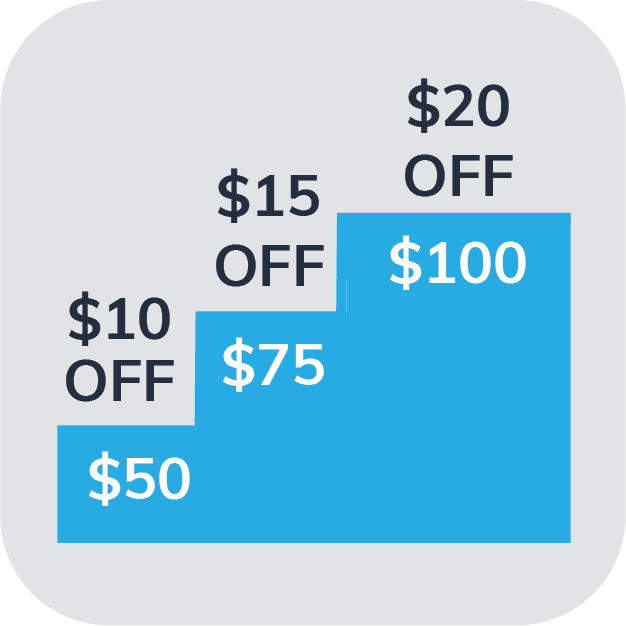
Tiered Discounts
A tiered discount is one that scales up depending upon the price of the item or the order value. For example, a retailer might offer $10 off orders over $50, $15 on orders over $75, and $30 off orders over $100.

BOGO
Buy one, get one free offers are also allowed in Google Shopping. You can offer a percentage off, too. For example, buy one T-shirt, get the second one 50% off.
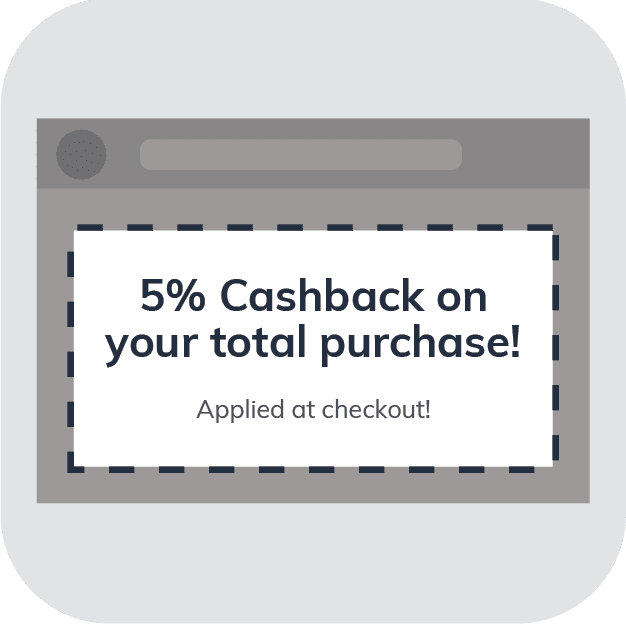
Cashback and Rebates
Cashback and cash rebates are permitted. These have to be reflected at checkout, though, so more traditional mail-in style rebates are not allowed.
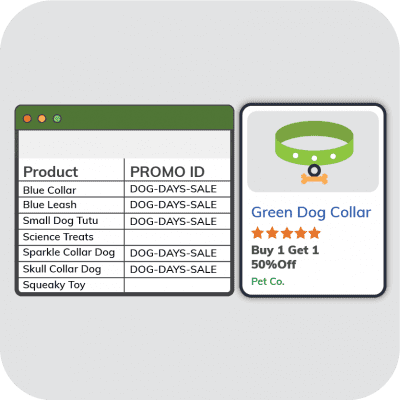
Example Scenario
Pet Food, LLC is running a Dog Days of Summer Deal. All orders over $50 will be discounted by $5, over $75 will be discounted by $10, and over $100 will be discounted by $20. They also want to offer a buy one, get one half off on all dog accessories like collars, leashes, and apparel.
To set this promotion up in Merchant Center, their agency first creates a tiered discount promotion. This promotion will apply to all sales, regardless of items purchased.
For the other promotion, the agency creates the ID DOG_DAYS_SALE. They apply this promotion ID as an attribute to all collars, leashes, and apparel in the product feed. Then, they create a promotion with that ID in Merchant Center that applies a buy-one-get-one-half-off discount to all products with that ID.

Promotion: Shipping
Advertisers can offer free or discounted shipping to customers – but the offer must contain a redemption code. This allows the promotion to be applied at checkout, which is a requirement for all promotions (see more on this below!) The only way to offer promotional shipping without a code is to combine it with another discount offer.
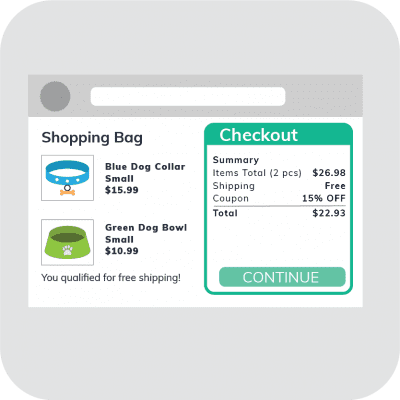
Example Scenario
Pet Food, LLC offers free shipping on all orders for National Pet Appreciation Day. The first year, to claim the offer, customers added items to the cart, and applied the promo code APPRECIATE at checkout.
The next year, Pet Food took a different tack. Instead of applying a promo code for free shipping, they offered 15% off and free shipping on orders over $25. Because the shipping was included with the discount offer, no promo code was required for approval.

Promotions That Are Not Allowed
There are a few restrictions to advertising promotions on Google Shopping. The majority of these are aimed at protecting the consumer, and preventing false advertising on the platform. Overall, they’re easy to avoid if your genuine intention is to provide a discount or alternative incentive to boost sales.

Can’t Be Vague
Promotions have to be specific and not overly vague. You can’t make offers like “up to 75% off.” There needs to be a stated minimum, and it needs to be at least 5%.

Can’t Target Specific People
Promotions can’t apply just to a specific group of people. This would include offers like birthday specials, and special pricing like military or preferred customer discounts. The terms of the promotion have to be equal for every customer.
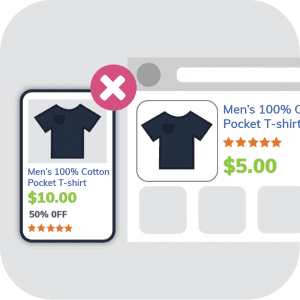
Can’t Falsify Discounts
Discounts have to be added on and can’t already be applied on the landing page. For example, you can’t add clearance pricing to a product and then try to advertise that new pricing as a promotion.

We hope this article helped you decide which Google Shopping promotions are right for your business. If you need help implementing any of these promotions or measuring their success, don’t hesitate to reach out today.
Running into errors while setting up promotions? Grab our Google Shopping Promotion Troubleshooting guide here.

